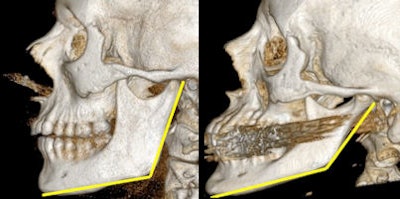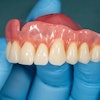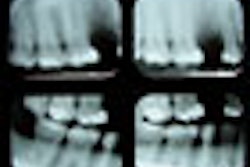
It may take more than a skin-tightening facelift to restore a youthful look. Significant changes in facial bones -- particularly the jaw bone -- occur as people get older and contribute to an aging appearance.
Understanding this offers new insight into procedures that may successfully restore a youthful appearance, said Howard Langstein, M.D., a professor and the chief of plastic and reconstructive surgery at the University of Rochester Medical Center.
Reviewing a collection of 120 facial CT scans taken for other, unrelated medical reasons, plastic surgeons measured changes that occurred to facial bones over time (Journal of Plastic and Reconstructive Surgery, January 2010, Vol. 125:1, pp. 332-342).
The CT scans were divided equally by gender and age, 20 men and 20 women in each of three age groups: young (ages 20-36), middle (41 to 64), and old (65 and older).
Researchers used a computer program to measure the length, width, and angle of the mandible, or jaw bone, for each scan, and to compare the results for each group.
 |
| The CT scan of a younger woman (left) compared to that of an older woman (right). The angle of the jaw increases markedly with age, which results in a loss of definition of the lower border of the face. Images courtesy of the University of Rochester. |
Using CT scans allowed for more accurate 3D reconstruction and increased accuracy of measurements, disputing previous research that relied on traditional head x-rays and suggested that the jaw bone expands with age, the researchers noted.
The angle of the jaw increases markedly with age, which results in a loss of definition of the lower border of the face. Jaw length decreased significantly in comparisons between the young and middle-age groups. The decline in jaw height from the middle to old group was noteworthy.
"The jaw is the foundation of the lower face, and changes to it affect facial aesthetics," Dr. Langstein said in a news release. "These measurements indicate a significant decline in the jaw's volume as a person ages, and therefore less support of soft tissue of the lower face and neck."
This loss of bony volume may contribute to sagging facial skin, decreased chin projection, and loss of jawline definition. As jaw volume decreases, soft tissue of the lower face has less support, resulting in a softer, oval appearance to the lower face and sagging skin, which also affects the aging appearance of the neck.
"Physicians have long been taught that facial aging is caused by soft-tissue descent and loss of elasticity," Dr. Langstein said. "Though we have always known that bones change over time, until now, the extent to which it causes an aged appearance was not appreciated."
Copyright © 2010 DrBicuspid.com



















